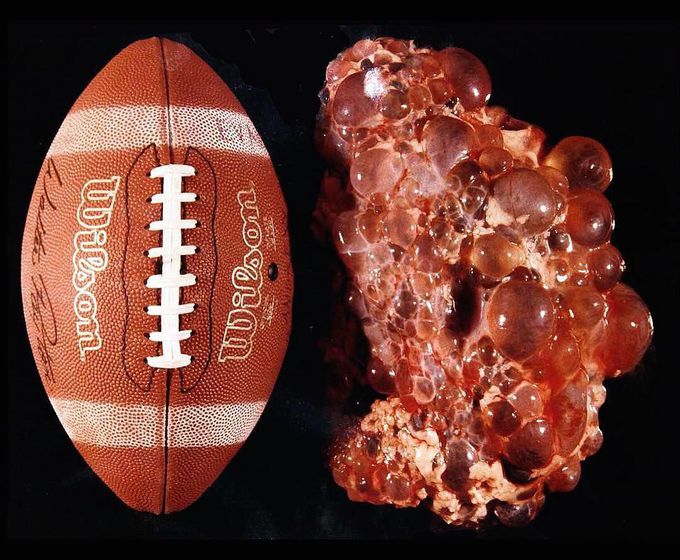


Kidney VS. Football!
Note how huge this kidney is, with the parenchyma completely replaced by large cysts, approaching the size of a football! Polycystic kidney disease is a genetic, autosomal dominant disorder marked by bilateral enlargement with large cysts bulging through the surface. This disorder can be expressed at any point of life and is very common, occurring in 1 out of every 500 adults. The cysts typically range from 3-4 centimeters in diameter and are filled with serous, turbid, or hemorrhagic fluid. As seen above, multiple cyst formation can cause the kidney to grow as big as a football if not bigger! Signs and symptoms include hematuria, low back pain, and hypertension. Many will present with normal renal function until middle adulthood. Common anomalies associated with this condition include liver cysts, berry aneurysms, and most commonly coarctation (narrowing) of the aorta. Complications include acute myocardial infarction (from chronic hypertension) and renal failure (from destruction of nephrons). Unfortunately, 30% of these patients die from the complications of renal failure. Diagnosis is confirmed through ultrasound used to visualize the cysts. Tolvaptan (Jynarque) was recently approved by the FDA for patients with rapidly progressing ADPKD. Also, moderate dietary restrictions, eating an anti-inflammatory diet, and medically regulated fasting have shown effectiveness in slowing down its progression. On the other hand, if renal failure does occur, dialysis and/or renal transplant are considered the best chance of survival. Photo by Wordpress.com

